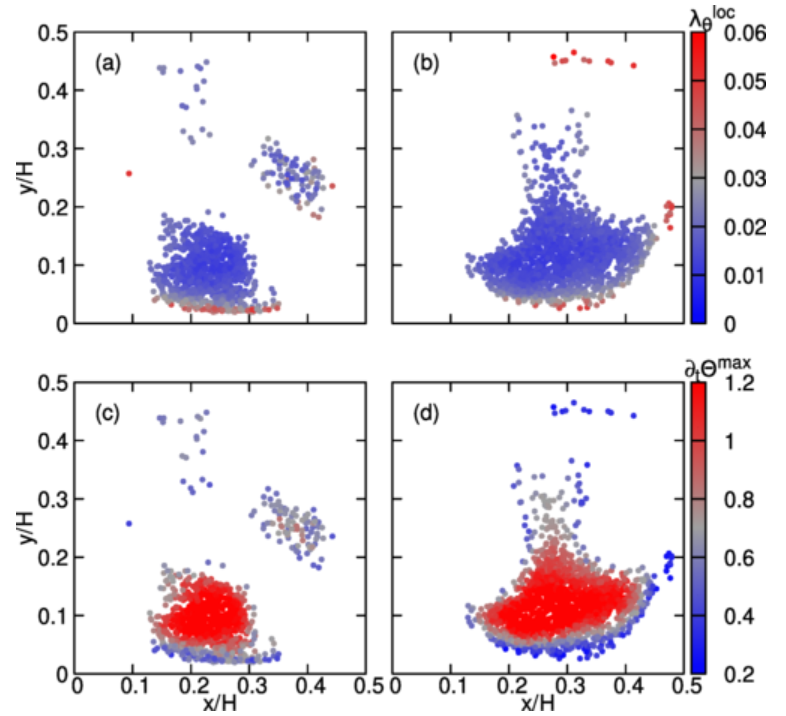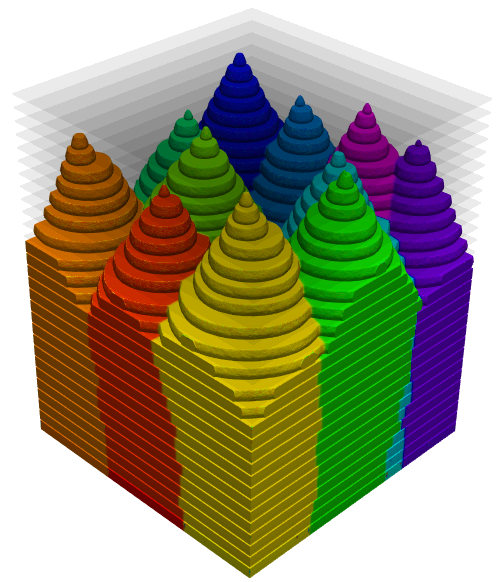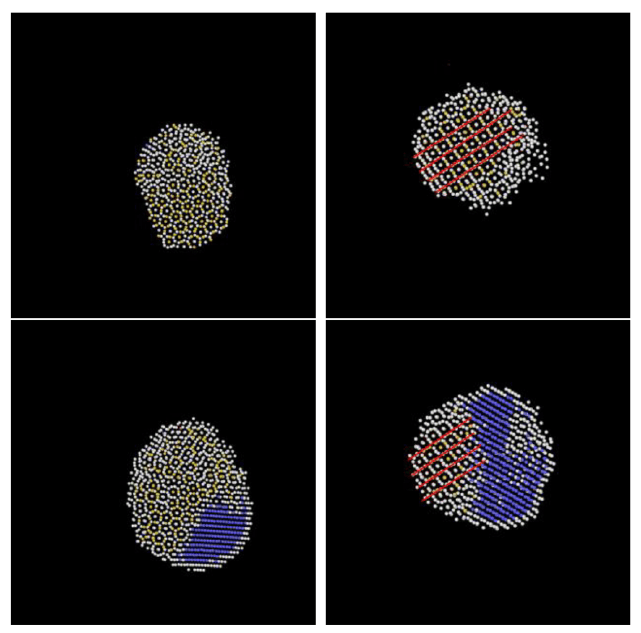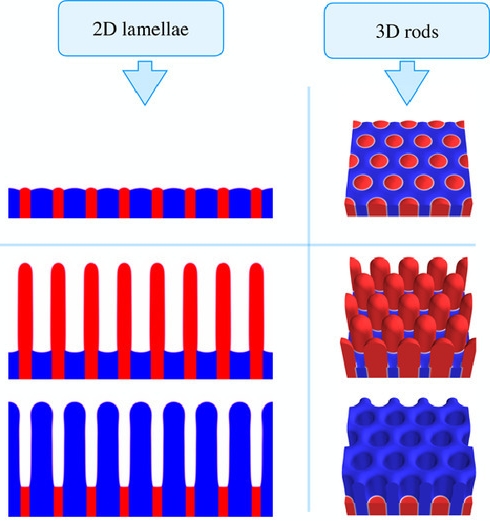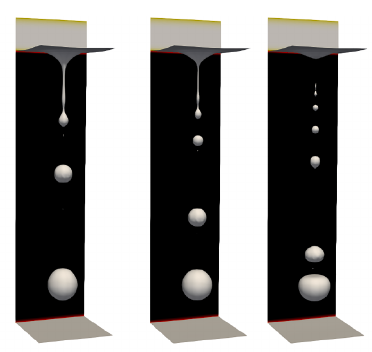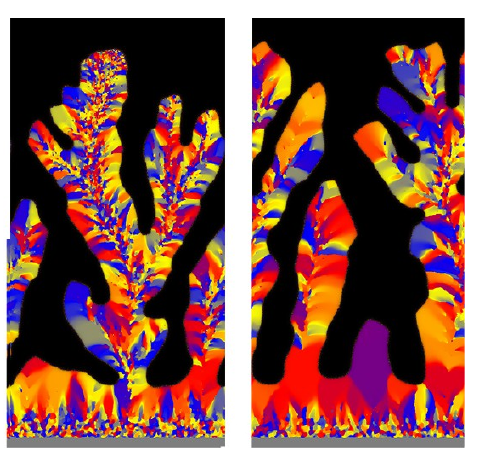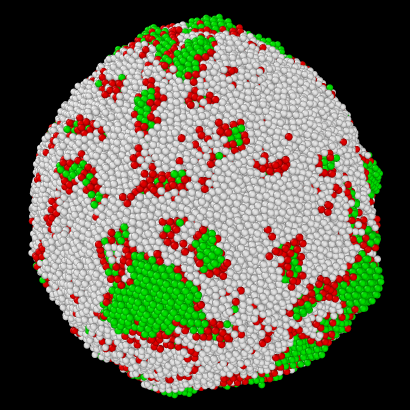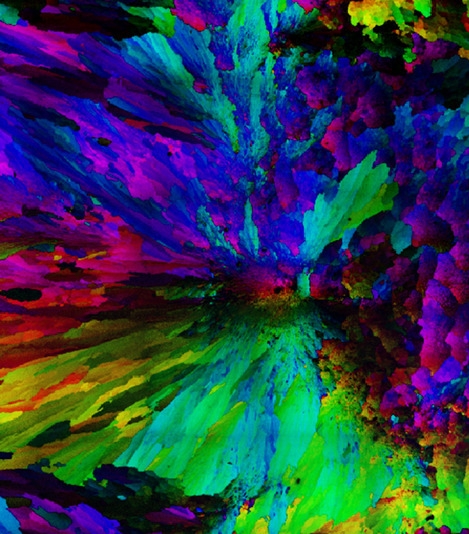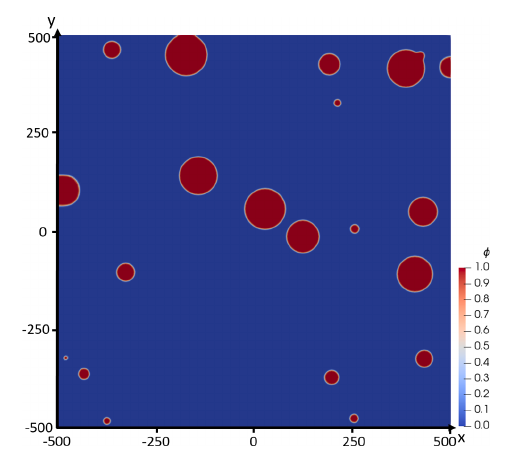Phase-field modeling of peritectic coupled growth in the TRIS-NPG model system
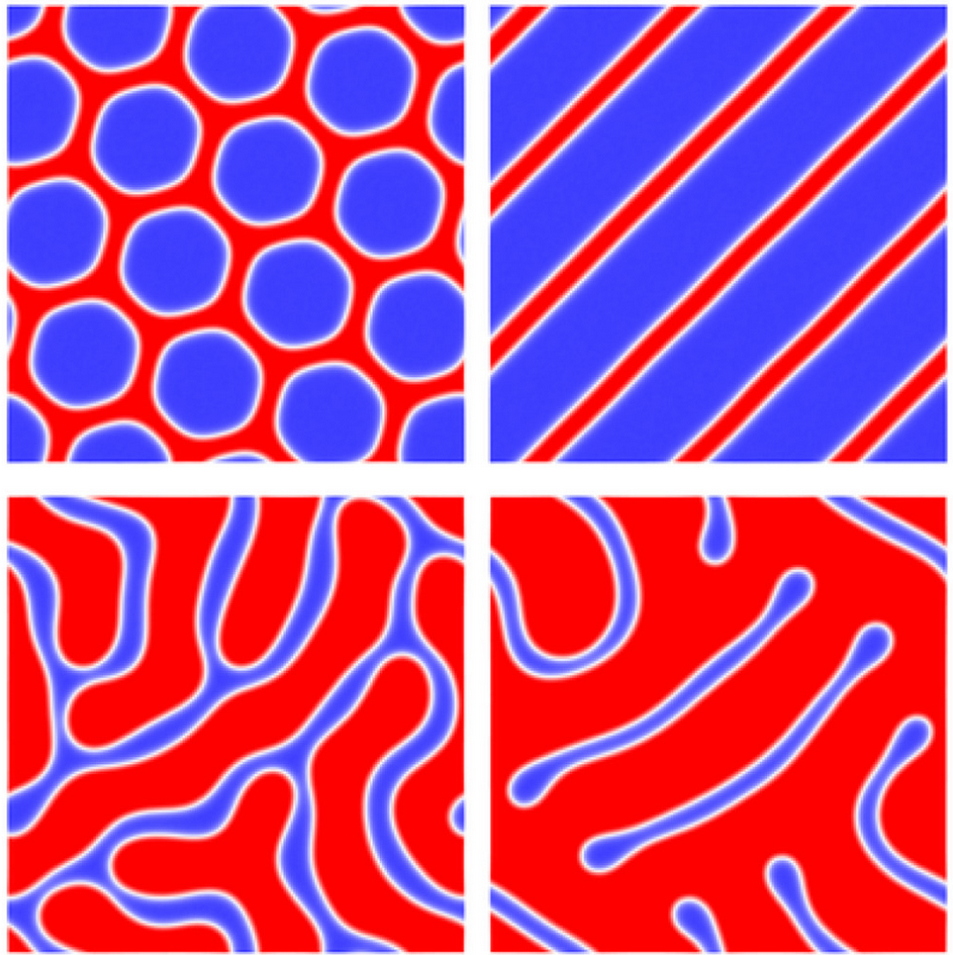
1Institute for Solid State Physics and Optics, Wigner Research Centre for Physics, P.O. Box 49, Budapest H-1525, Hungary
Microstructures forming during the directional solidification of the hypo-peritectic TRIS–NPG model alloy were studied by phase-field simulations. Steady state growth forms could be obtained under conditions similar to those in recent space experiments. In two dimensions, the wavelength range of stable lamellar structures has been determined as function of the temperature gradient and the melt composition. Front temperatures extracted from simulations were compared to the predictions of the modified Jackson–Hunt theory. In three dimensions, structures and phenomena known from eutectic systems were reproduced. Transitions between lamellar and rod structures were induced by slowly changing the melt composition. The regularizing effect of tilting the temperature gradient, transforming a random labyrinth pattern to an ordered one, has also been demonstrated. These simulations show the universality of the basic governing mechanism — that is, the competition of solute diffusion with capillary effects — in the pattern formation of these multi-phase systems.

